Nikon AF-S Nikkor 20mm f/1.8G review
November 20, 2016
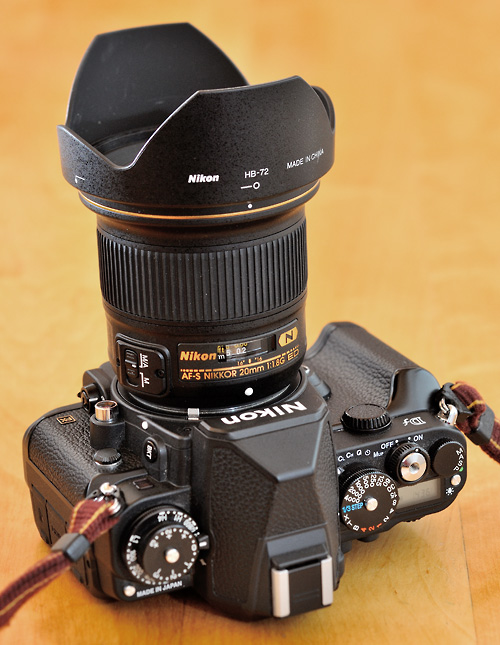
|
This is one of the more spectacular lenses in Nikon's f/1.8 lineup. It is 1.33 stops faster than everything Nikon produced with a focal length of 20mm before. Well, "fast" just follows a geometric formula: 20mm f/1.8 says the maximum diameter of the lens' diaphragm is 20mm/1.8=11.1mm. But there is an opponent called vignetting.
Vignetting consists of two components: the natural light falloff and the artifical vignetting caused by the lens' construction.
The natural light falloff is independent from the aperture used. According to my computation this Nikkor has a natural falloff of about 0.7EV towards the extreme corners.
In contrast, the artificial vignetting is usually a problem of large apertures (small aperture values). This 20mm Nikkor shows a really hefty artificial vignetting at f/1.8.
Nasim Mansurov from photographylife.com (see my "links" section) has reviewed this lens, too. He measured a vignetting of 3.2EV at infinity and F1.8 and of 1.39EV at F2.8 and infinity. These values are really strange: If you stop down the lens from F1.8 to F2.8, the centre will get 1.33EV darker, while the corners will get half a stop brighter!
I am not able to measure vignetting, but I can give you an impression of the issue with my sample at infinity:

|
Thus, fast is relative and you now know the biggest drawback of the 20mm f/1.8. In every other respect this Nikkor is a very fine piece of glass! As you can see in my "subjective lens evaluations" I have rated it with five stars.
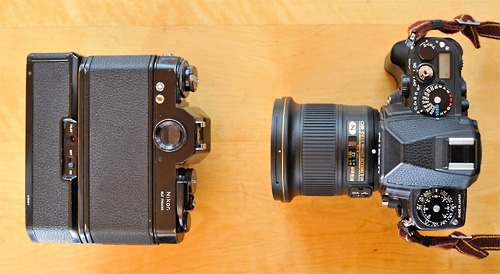
|
You can go close with the AF-S Nikkor 20mm f/1.8G!
The result of this shot can be found below under "Sample images".
|
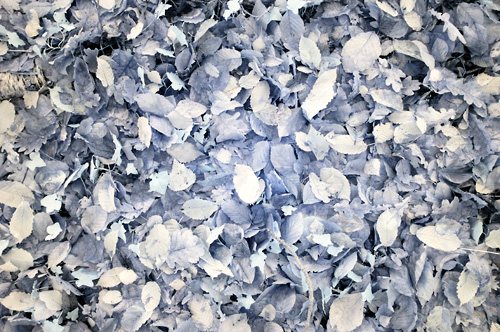
|
The 20mm f/1.8 is a great performer in infrared light and there is no noteworthy focus shift. But as you can see in the image above (Shot with my D300IR at F5.6), the lens has got a slight hotspot issue. The hotspot is visible at every aperture. F2.8 is the best choice in my opinion.
|
Specifications:
- 13 elements in 11 groups.
- Closest focus is 18.8cm (only possible in MF mode) with a distance of around 6cm between the subject and the front of the lens. The magnification then is approx. 1:3.6.
- The length doesn't change during focussing.
- Weight including both caps and hood is 410 grams.
- Filter size is 77mm (non-rotating).
- Length from the camera's lens mount is about 82mm (115mm including hood).
- Diameter is about 83mm (95mm including hood).
- Hood: HB-72, included in delivery.
Positives:
- Very good build quality.
- Very sharp and contrasty.
- Closest focus is close!
Drawbacks:
- Hefty vignetting wide open.
Alternatives:
I still own two alternatives:
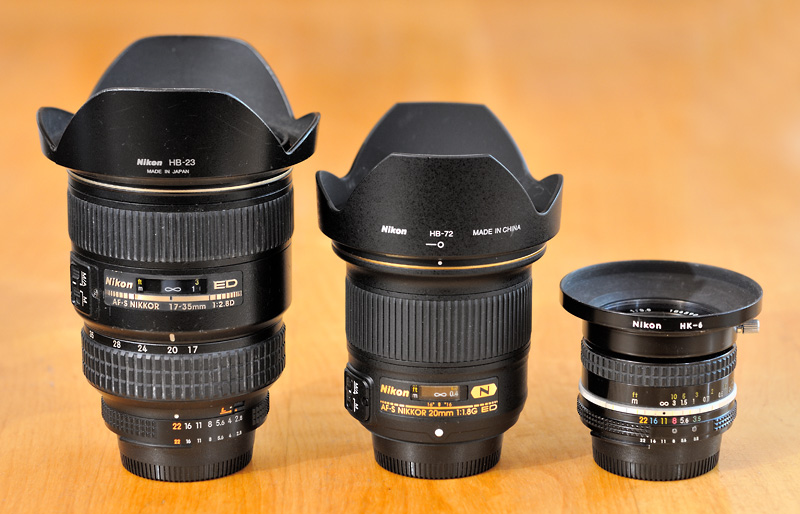
|
AF-S Zoom-Nikkor 17-35mm f/2.8, 810 grams - AF-S Nikkor 20mm f/1.8G, 410 grams - Nikkor 20mm f/3.5, 295 grams.
|
|
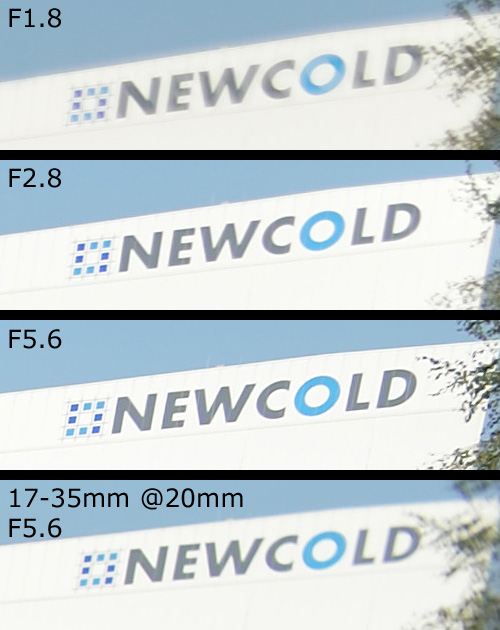
|
Sharpness comparison of the upper right corner.
|
In terms of size and weight the 20mm f/1.8 is a good compromise. Moreover, the f/1.8 is sharper than the f/3.5 (especially at infinity) and it has sharper corners than the 17-35mm (see comparison to the right). At F2.8 the 20mm f/1.8 is sharp from corner to corner and vignetting is mostly gone. Therefore it is a great lens for astrophotography, available light photography and so on.
Because the f/1.8 is a 'G'-Lens, it is not really usable in conjunction with tubes or with a bellows unit. Reverse mounting is also problematical. The f/3.5 is better suited for such purposes!
The 17-35mm is a professional lens and it is built like a tank. As a zoom it is more versatile. The infrared performance is overall better, because the 17-35 does not have a hotspot issue (otherwise it would be a bit worse).
The f/1.8 does not have serious problems when shooting into the sun. But both, the f/3.5 and the 17-35mm handle such strong backlight situations a bit better.
Sample images:
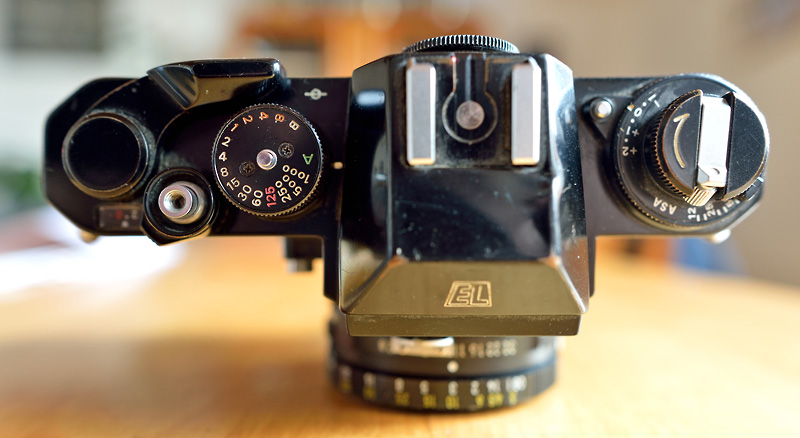
|
Close up of the Nikon EL2. Shot with the Nikon Df at F2.8. This image was just raw converted with Nikon Capture NX2.
|
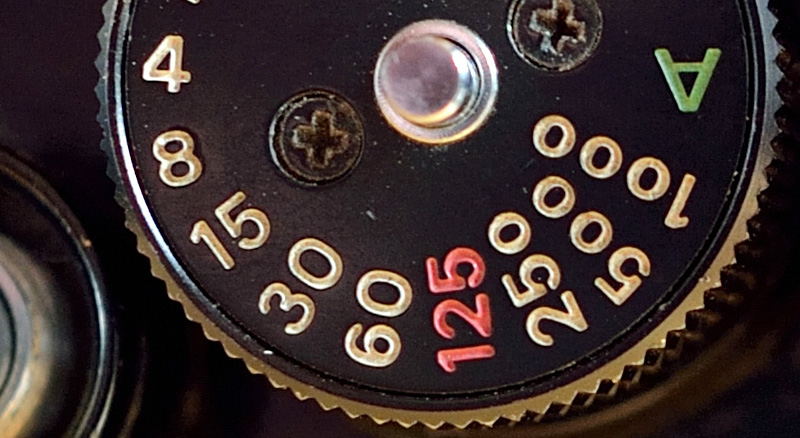
|
100% crop of the image above.
|
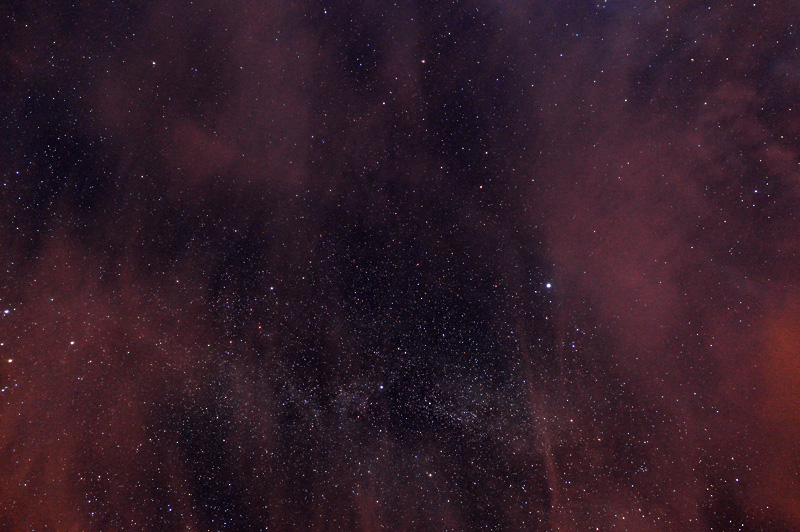
|
Nightsky (with clouds), Nikon Df at ISO 6400, 15sec and F2.8.
|
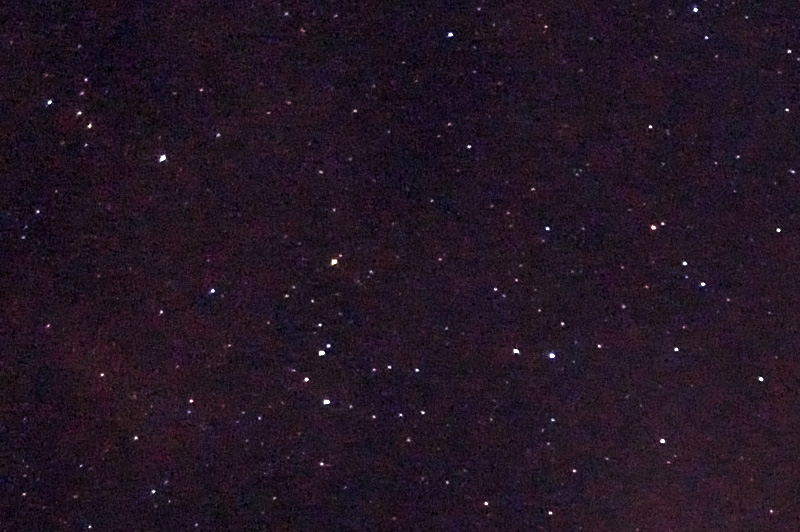
|
100% crop of the upper left corner of the image above.
|
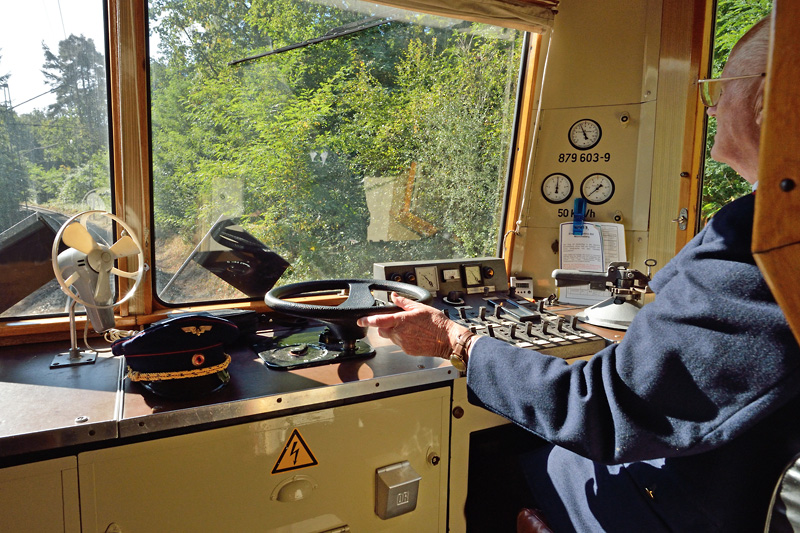
|
The driver's cabin of the "Buckower Kleinbahn" railway. Shot with my Df at F8.
|
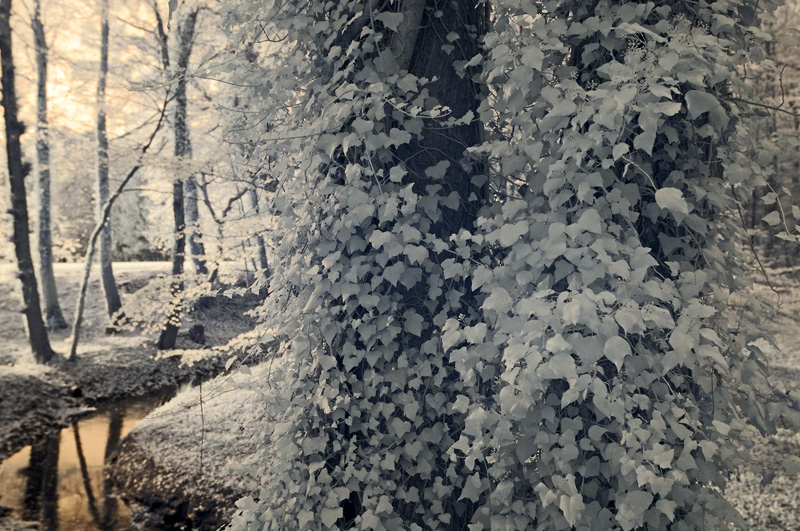
|
In the infrared wood. Nikon D300IR, F2.8.
|












